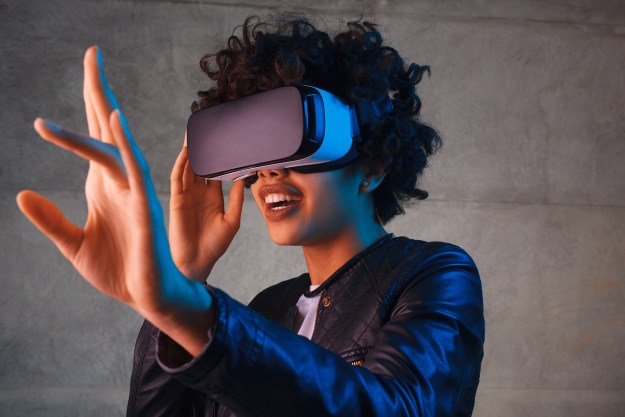
Virtual and augmented reality have provided the company with an opportunity to exercise this creativity. At Build 2017 we saw new motion controllers, a Cirque du Soleil set designed and refined with HoloLens, and real-time use of holograms to design chair lifts, among other things.
It all looked great, yet there’s a problem. Microsoft’s real-world rollout of its ideas has fallen behind and so far, appeared for only a limited audience. That makes it hard to take the company’s mind-bending ideas seriously.
Motion controller magic
The biggest VR news from Build 2017 was undoubtedly Microsoft’s new Windows Mixed Reality motion controllers. Based on inside-out tracking technology, the controllers base their position off the headset and their internal sensors, rather than external base stations.
It’s hard to take these mind-bending ideas seriously.
They simplify setup and make multi-room use possible. Better yet, they seem reasonably priced. An Acer Mixed Reality Headset bundle was revealed at $399, just $100 more than the headset on its own.
All that sounds great, but hold on. The controllers weren’t present at Build 2017. They weren’t even shown on stage. While Microsoft answered a few general questions about the controllers in a press session, the specifics weren’t provided.
Fool me once…
Of course, it’s perfectly OK for Microsoft to tease a product. A reveal doesn’t need to have all the details.
The problem is not with the motion controllers’ reveal, but instead in the pattern they’re a part of. Since HoloLens first appeared, Microsoft has continually demonstrated VR, AR, and now Mixed Reality devices without firm release dates, and with only vague technical details.
Repeatedly, these projects have taken much longer to appear than initially hoped. HoloLens appeared in January of 2015, yet it still lacks any tangible plans for broad release. Windows Mixed Reality was shown first in conjunction with the Windows 10 Creators Update, implying they would launch together. Now, it appears we’ll have to wait until holiday 2017 to see a headset that doesn’t have “dev kit” in its title.
Then we have the elephant in the room — Paint 3D. Touted as a content creation tool for Windows Mixed Reality, the version delivered with the Creators Update is little more than a toy. It’s completely unsuited for 3D printing or serious content creation, and its disappointing execution undermined the heart of the Creators Update.
Let’s see the proof
There may be reason for Microsoft’s delays and lack of detail. As our own Mark Coppock argued several months ago, Microsoft’s casual pace may be due to its desire to create platforms rather than individual devices. In other words, the goal may be an ecosystem of devices, rather than a particular device.
Which may be true.
Still, Microsoft should consider holding back the fireworks until the fuse is lit. It’s hard to get pumped about the next big thing when the last few big things still haven’t launch — or exploded on the launch platform.
Editors' Recommendations
- Vision Pro could take ‘four generations’ to reach ideal form
- The next Vision Pro could let you see invisible energy
- Apple’s next Vision Pro may send you on a mood-altering trip
- This $40K Vision Pro mod adds 18K gold to Apple’s headset
- Apple may be forced to change the Vision Pro headset’s name


